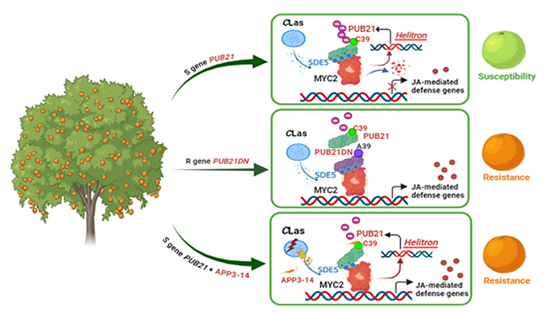

Figure 2: The regulatory mechanism of citrus Huanglongbing resistance through targeted protein degradation
Under the support of the National Natural Science Foundation of China (Grant No. 32125032, etc.), Ye Jian's research team from the Institute of Microbiology of the Chinese Academy of Sciences cooperated with Professor Wang Xuefeng's team from Southwest University to make progress in the resistance mechanism of the world's major agricultural disease, citrus Huanglong disease. The research results were published in Science (Figure 1) on April 11, 2025 in the form of a cover article entitled "Targeted MYC2 stability considerations citrus Huanglong disease resistance". Paper link: https:// doi/10.1126/science.adq7203。
Citrus huanglongbing is a devastating disease caused by Asian phloem bacteria, mainly transmitted through citrus psyllids. The disease has ravaged nearly 50 countries worldwide, causing an average annual loss of over billions of dollars in the industry. Due to the susceptibility of all commercial citrus varieties to this disease, the prevention and control situation is very severe. Revealing the core molecular mechanism of citrus resistance to Huanglongbing is an important prerequisite for overcoming this challenge.
The research team discovered through in-depth exploration of distant germplasm resources of the citrus genus and the Rutaceae family in China that the core transcription factor MYC2 and its interacting E3 ubiquitin ligase PUB21 in the plant jasmonic signaling pathway constitute a disease resistance regulatory hub. Revealing the existence of PUB21DN paralogons in citrus "distant relatives" such as Sichuan pepper and curry plants, a dominant negative effect is formed through 39 key amino acid mutations, significantly enhancing the stability of MYC2 protein, activating multiple anti disease proteins and secondary metabolite synthesis pathways, and enabling citrus to obtain high resistance and even immunity to Huanglongbing. Based on the natural resistance mechanism, the team has developed a drug screening system targeting stable MYC2 protein, and utilized artificial intelligence (AI) technology to efficiently screen therapeutic peptides such as APP3-14 from a million level molecular library. Through cross latitude multi center field trials in Guangxi and Jiangxi, it has been confirmed that this small peptide can significantly inhibit the colonization of Huanglong pathogen, block the transmission chain of the disease, and achieve a single season prevention and control efficiency of 80%. (Figure 2).
This achievement provides candidate molecules for green biopesticides that can be directly applied; The discovery of disease resistant genes provides an important target for the future use of gene editing to create new disease resistant germplasm, which can effectively shorten the breeding cycle of citrus disease resistance; Established a paradigm for utilizing cross species resistance elements, providing new ideas for disease resistance research in other crops.